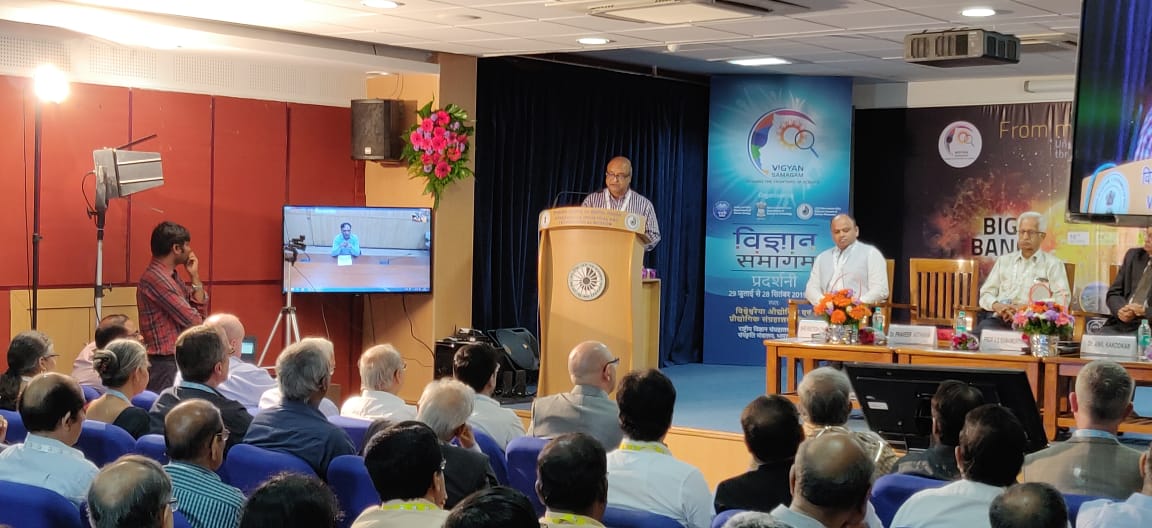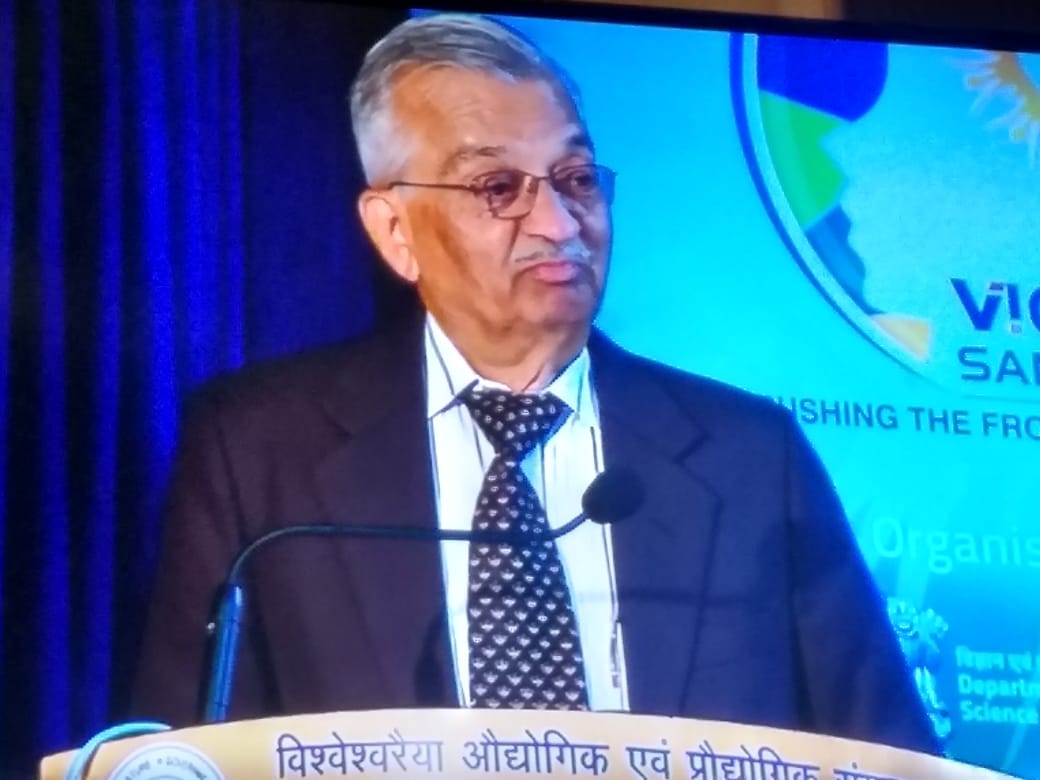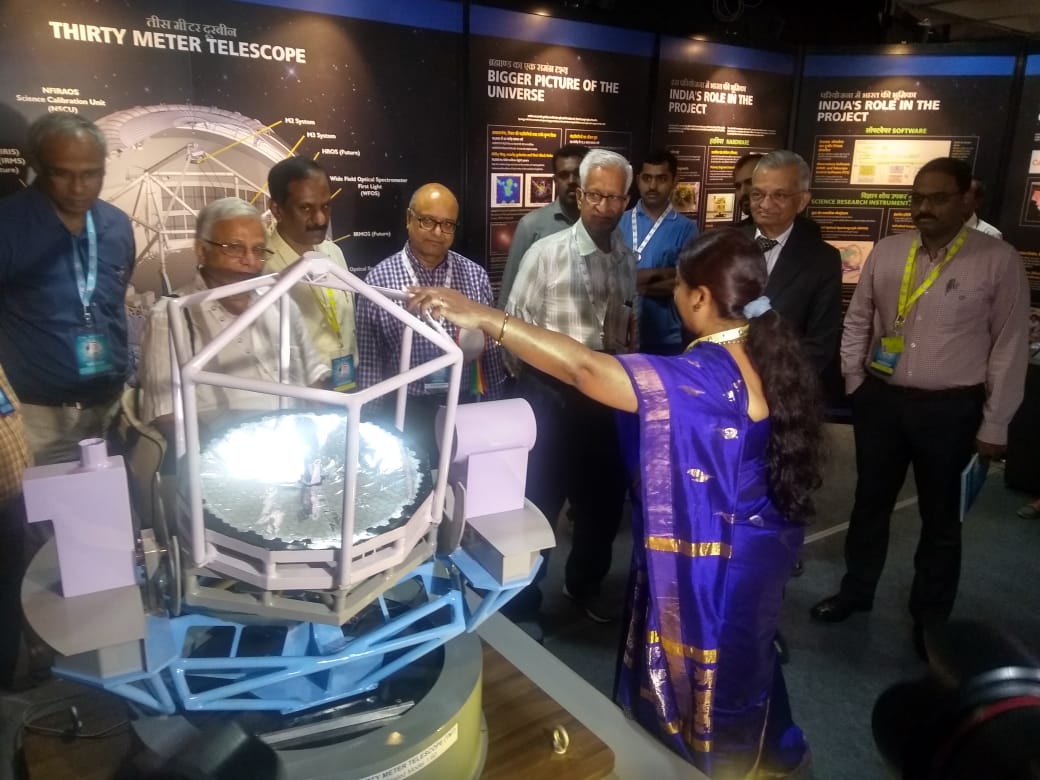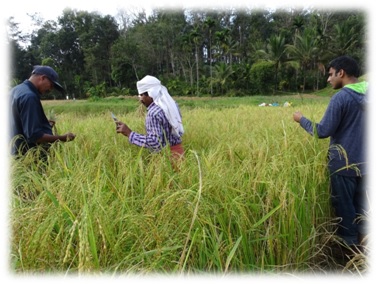 After the huge success of the first edition of India’s multi-venue mega-science Exhibition, ‘Vigyan Samagam’, at Nehru Science Centre, Mumbai, its’ second edition was inaugurated in the Silicon Valley of India, Bangalore on 29th July at the iconic Visvesvaraya Industrial and Technological Museum (VITM).
After the huge success of the first edition of India’s multi-venue mega-science Exhibition, ‘Vigyan Samagam’, at Nehru Science Centre, Mumbai, its’ second edition was inaugurated in the Silicon Valley of India, Bangalore on 29th July at the iconic Visvesvaraya Industrial and Technological Museum (VITM).
While inaugurating Vigyan Samagam, eminent scientist, Member of Atomic Energy Commission and Chairman of Rajiv Gandhi Science and Technology Commission, Mumbai, Dr Anil Kakodkar, said, “In order to spread the awareness of the role such mega-science projects play in furthering human understanding at a global level and benefiting national scientific and technological capability and to catalyse engagement of more students, researchers and industry, it is absolutely necessary to highlight the value and impact of such programs to a broad cross-section of society. Vigyan Samagam is a unique endeavour towards the cause and has brought mega-science a step closer to the society.”
This multi-venue Science Exhibition is covering four cities - Mumbai, Bengaluru, Kolkata and New Delhi and has come to Bengaluru in its second edition. The exhibition, in its 11-month long run, was flagged-off from Mumbai in May 2019.
The Department of Atomic Energy (DAE), Department of Science and Technology (DST), the co-ordinating and funding agencies to these projects and the National Council of Science Museums (NCSM), Ministry of Culture, having expertise in design and hosting such exhibition, have jointly organized this prestigious Science Exhibition.
On the occasion, Prof. Ashutosh Sharma, Secretary DST who addressed the august gathering through video conference congratulated all those who made Mumbai Vigyan Samagam a huge success and asked people to extensively discuss science during two-day event and learn from each other. He emphasized on attracting more people to participate in science.
He appreciated the untiring and synergistic efforts of the team behind this mega-science event, which has been very successful in generating interest and attraction for science in our youth on a large scale.
Former Secretary DST and Director NIAS, Prof. V. S. Ramamurthy said that in the recent decades, India has demonstrated unequivocally that it has the scientific and technological capabilities to contribute to mega-science collaborations and the political willingness to commit the required resource. “I am confident that Vigyan Samagam will attract the attention of every one to appreciate the challenge of carrying out research at the frontiers and encourage some of the students to opt for careers in research,” he added.

Shri Shivaprasad M Khened on behalf of National Council of Science Museums participated in the event and explained the importance of the exhibition. He said that Vigyan Samgam exhibition has been able to portray the role of India in world science and the contributions of Indian Scientists in various international projects. He also explained the activities of National Council of Science Museums in popularising science through both indoor and outdoor activities reaching out to the unreached.
The panel of eminent scientists spoke about why megaprojects are crucial to understand our universe and led to significant advancement in our technology. They also summarised the importance of organising such multi-venue science exhibitions. The events are aimed to bring maximum participation from the industries and to give them platforms to showcase their potential.
It targeted to reach out to the non-scientific community to enable them to make informed decisions and to inspire the young generation with our achievements. The scientists also highlighted the challenges of initiating mega projects that include funding issues, an immense amount of resources, successful collaborations and cultural integrity.
The event inaugural was followed by the inauguration of Samagam exhibition and industrial exhibition at different locations in the museum, which is open to the public for the two months.
The two-day event featured one resource person from each of all the seven megaprojects, viz, CERN, TMT, SKA, LIGO, INO, ITER and FAIR, out of which the former three were discussed on the first day. Dr Chandratre from BARC started the CERN project discussion by enlisting the contribution of India in designing the accelerators and grids for Large Hadron Collider (LHC) at CERN. Dr Seema Sharma, from IISER Pune, took the audience through a list of contributions made by Indian institutes in Compact Muon Solenoid (CMS) experiments at CERN. Dr Subhashis Chattopadhayay from VECC, Kolkata shared his interesting findings of Quark-gluon plasma (QGP) which will help physicists understand the microsecond-old universe in the laboratories. Mr Suman Sarkar from BARC spoke about the opportunities for business, CERN procurement process and the challenges faced by industries and the megaproject organisers.
Dr A K Tickoo from BARC had spoke in detail about the Major Atmospheric Cerenkov Experiment Telescope (MACE) Gamma-ray telescope placed in Hanle, Jammu, and Kashmir, highlighting the critical design issues. He also spoke about how Monte-Carlo Simulations have helped to predict the models and checking the performances of this equipment.
Post lunch, a session on the TMT project started. Dr Luc Simard from the University of Victoria gave a highly engaging talk on the journey of designing and building the TMT which included scientific data, cutting-edge technology and stories of people involved. He shared insights into the project that aims to put a thirty-meter telescope (TMT) in Maunakea by 2030. The talk was followed by that of Prof Eswar Reddy from IIA, who highlighted the role of Indian institutes in the TMT project. He informed the audience about the primary mirror, an essential part of the telescope, being manufactured in India and issues related to the same. The session included a panel discussion led by Prof Annapurni Subramaniam from ISRO, Prof Ajith Kembhavi from IUCAA, Dr P Sreekumar from IIA and Mr s Murali, an industry representative. They discussed the challenges of bridging the gap between innovation and technologies.

The last session of the day was kept for SKA megaproject, which started with an interesting talk by Dr Philip Diamond from the University of Manchester. He discussed the goals of the square kilometer array (SKA) project which includes detecting hydrogen emission at the time of the big bang, understanding transient radio sky, detecting gravitational waves passing through the galaxy and exploring the dark ages, cosmic dawns, and re-ionization.
Prof Nirupam Roy from Indian Institute of Science (IISc) joined the session and enlisted the roles played by Indian scientists in central signal processing for the SKA project. He briefly informed the audience about the evolution of cold gases in galaxies and its relationship with stars.
The last session was wrapped up by a panel discussion led by Proffessor N Uday Shankar from Raman Research Institute (RRI) who shared very enlightening ideas with Dr M R Sheshadri, an ex-scientist at Defence Research and Development Organisation (DRDO) and Ms Ashita Gupta, an electronics-based company representative. They shared their experiences of working with scientists from RRI and developing cutting-edge technologies for these megaprojects. They discussed the pros and cons of being struggling industries in India and the challenges faced by them. The session ended with the proposal of possible solutions and the ideas to be executed to minimize the difficulties to achieve efficient technique.
After Bengaluru, Vigyan Samagam will reach Kolkata. In its final leg, it will reach to New Delhi where subsequent to the conclusion of exhibition it will remain as a permanent exhibit in New Delhi under NCSM.
Iconic International Scientific Organisations participating in Vigyan Samagam include European Organization for Nuclear Research (CERN, ‘Facility for Antiproton and Ion Research’ (FAIR), India-based ‘Neutrino Observatory’ (INO), ‘International Thermonuclear Experimental Reactor’ (ITER), ‘Laser Interferometer Gravitational - Wave Observatory’ (LIGO), ‘Major Atmospheric Cherenkov Experiments’ (MACE), ‘Square Kilometer Array’ (SKA) and ‘Thirty Meter Telescope’ (TMT).
Format of the Exhibition
The Exhibition has themed galleries of posters, working models and exhibits, informative audio-visual content and on electronic displays and interactive kiosks setup for each of the Mega Science Projects. The inaugural event at each of the four venues will be followed by a two days scientific event comprising of invited talks and lectures by eminent speakers from the field of science, technology and Industry. The audience would include invited members from scientific organisations, industry partners and academia.
Coinciding with the scientific seminar, during the first two days at each venue, industry partners working with the participating Mega Science Projects will set-up an expo at the venue to showcase their contributions. As part of project awareness activities, each participating project will be carrying out a week-long activities consisting of popular talks, science demonstrations, interactive quiz programmes, etc.
In each of the four cities, various engaging activities for school children and students are being taken up. Planned activities include quizzes, essay-writing / drawing contests, and popular outdoor programmes like science awareness programmes etc. In order to reach out to more people and involve them with this Exhibition, Vigyan Samagam has its website www.vigyansamagam.in and a mobile app Vigyan Samagam.
like science awareness programmes etc. In order to reach out to more people and involve them with this Exhibition, Vigyan Samagam has its website www.vigyansamagam.in and a mobile app Vigyan Samagam.
Important talks and lectures will be streamed live through social media platforms like Facebook, Twitter and YouTube of VITM, Bengaluru.
Exhibition will be open on all days, including Saturdays, Sundays and Holidays. At
Bengaluru, the timing will be from 10 am to 6 pm.






























